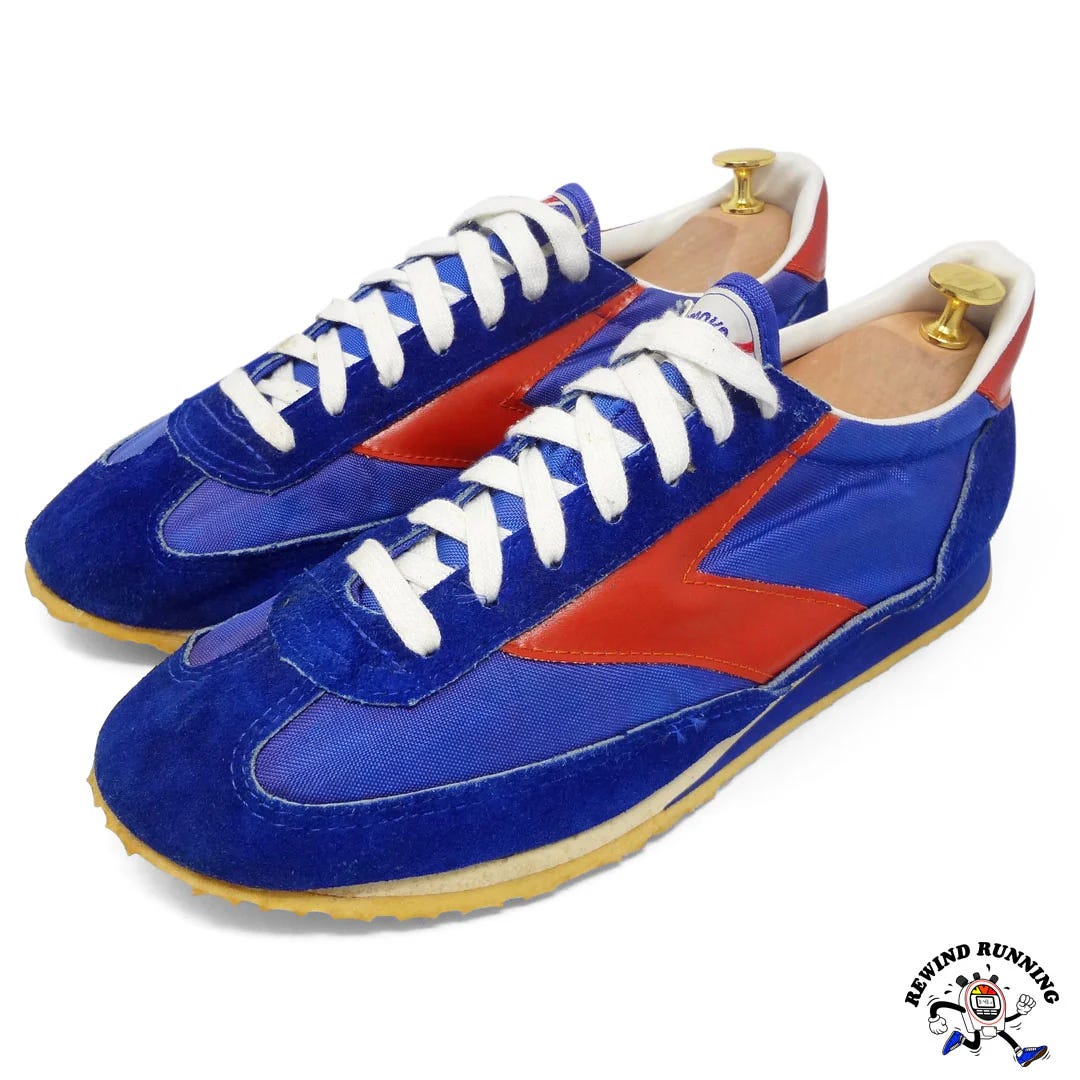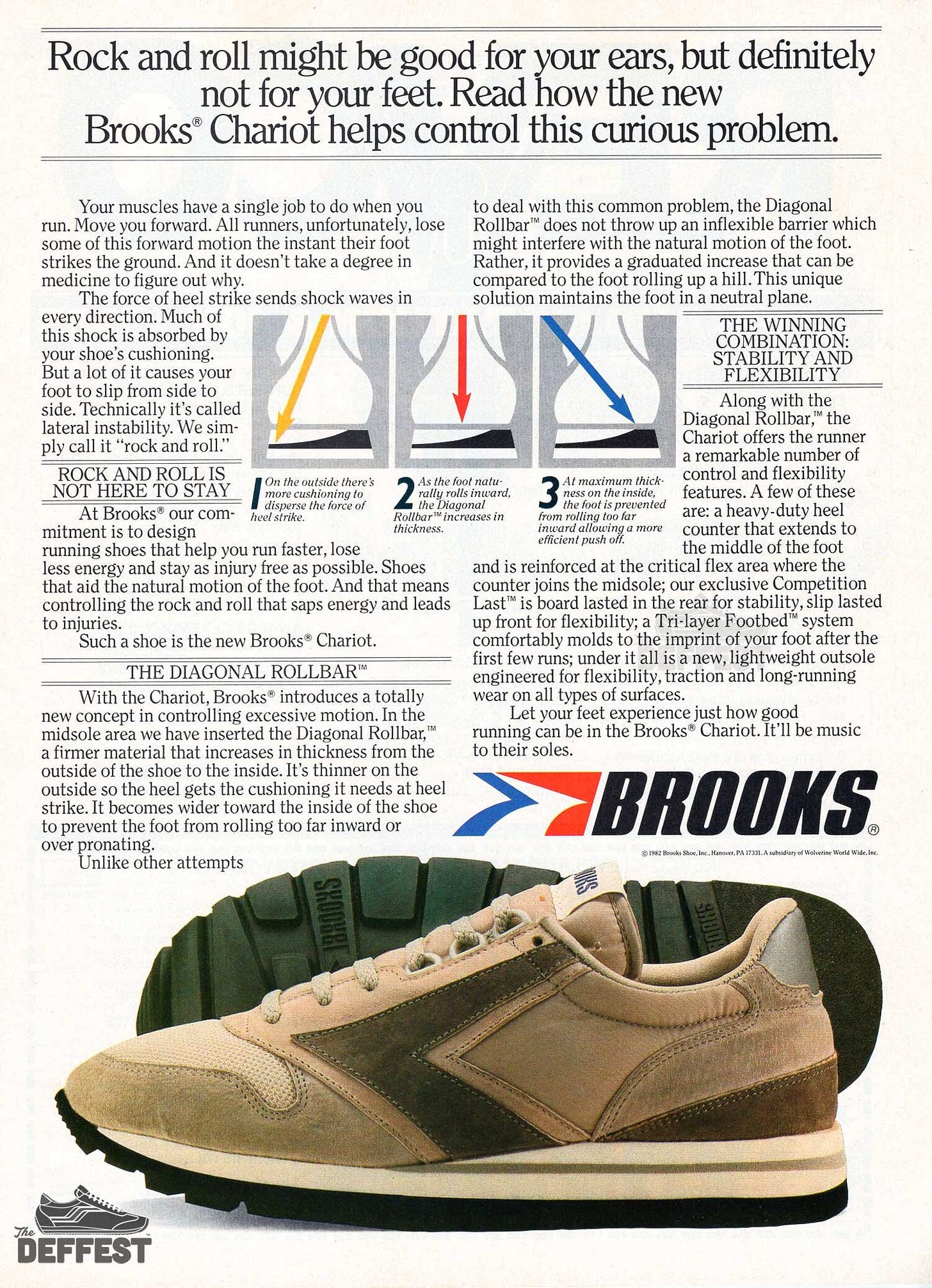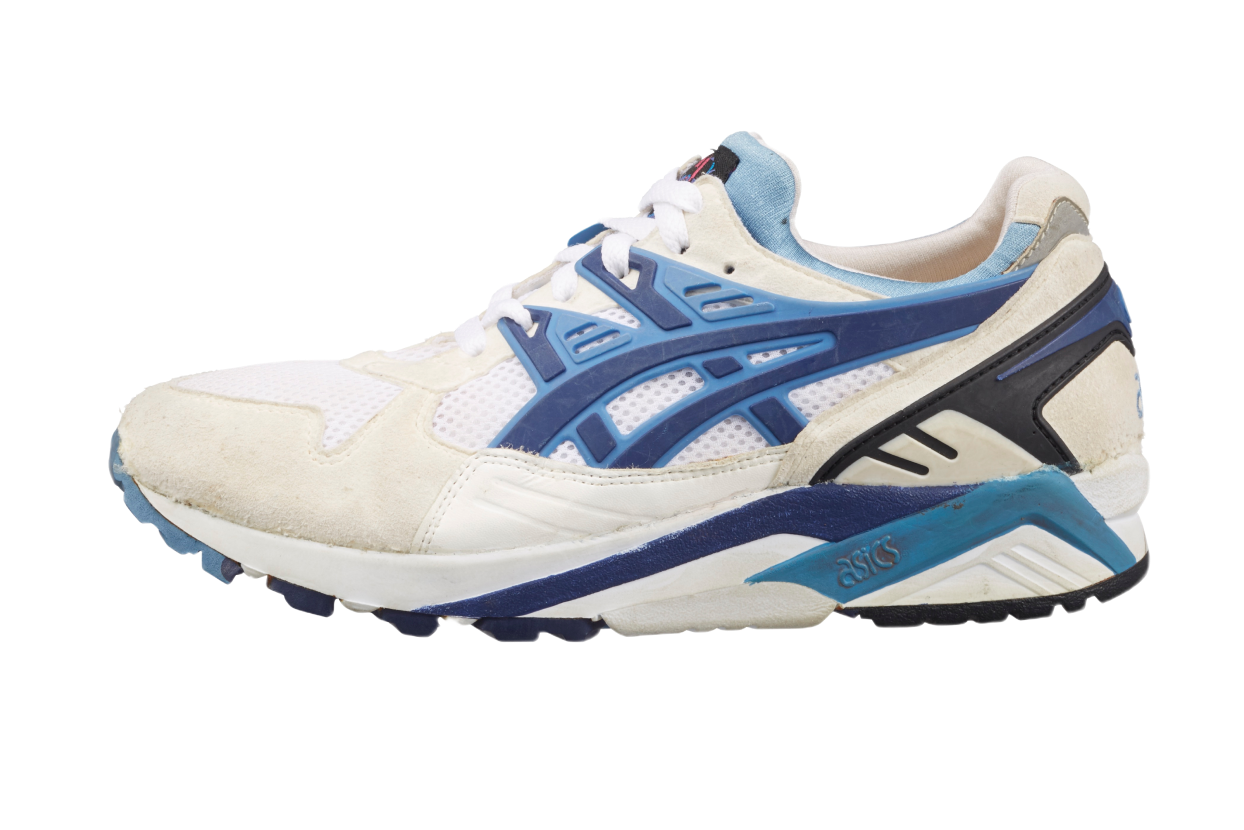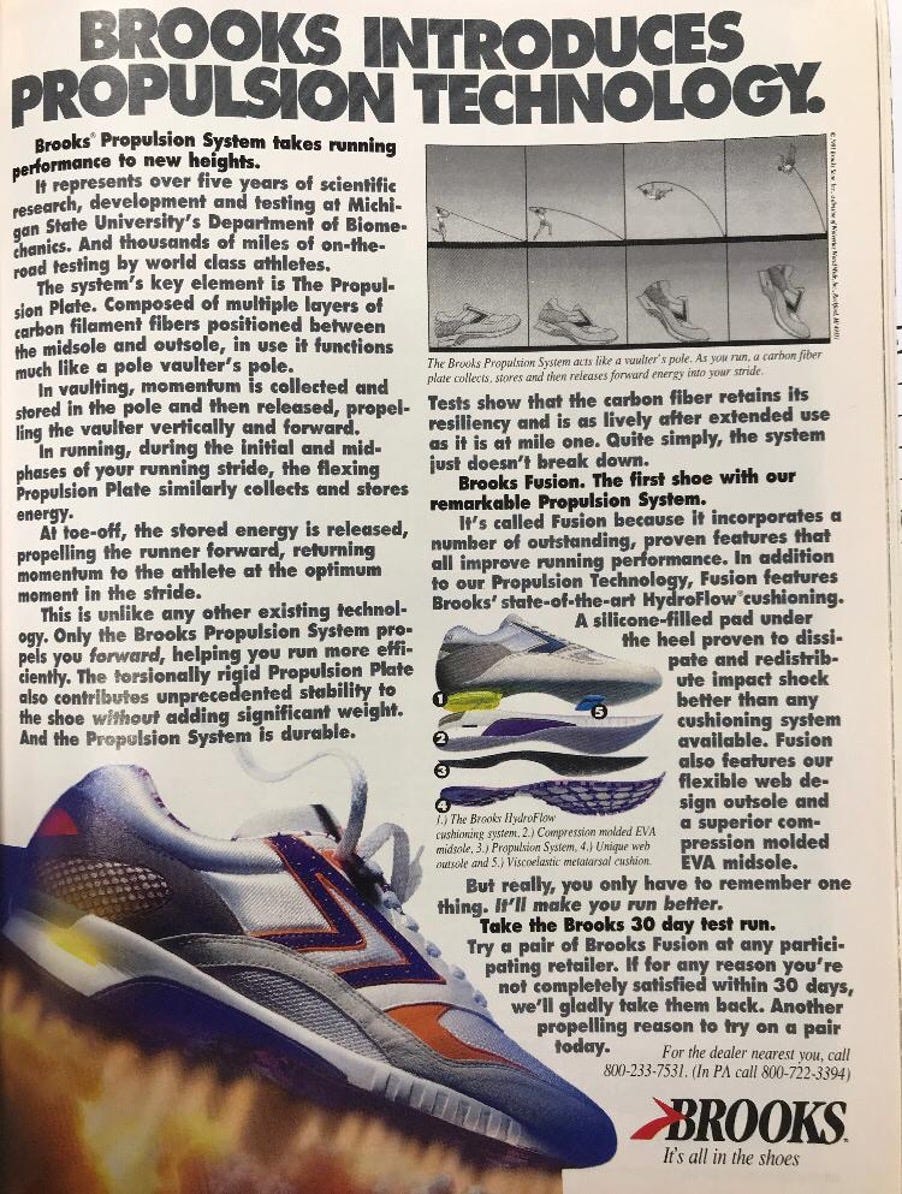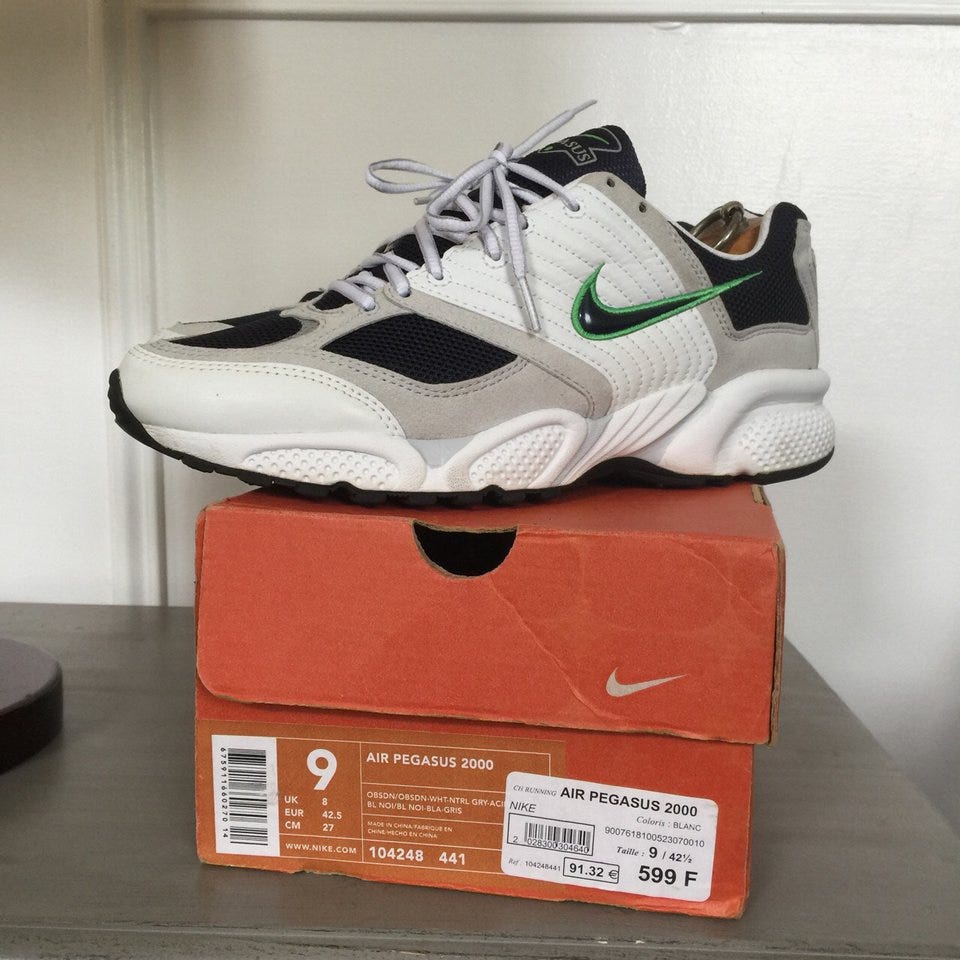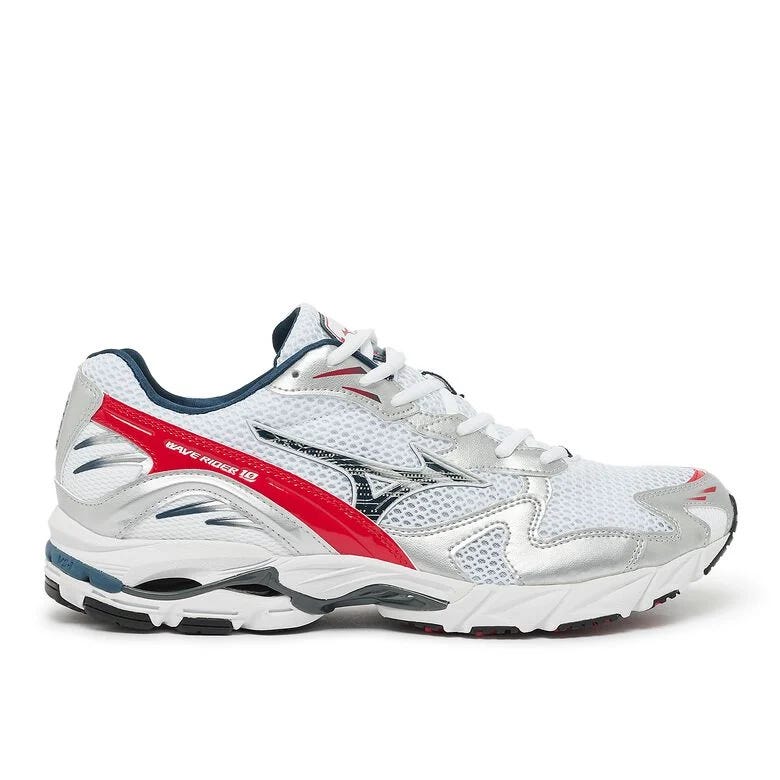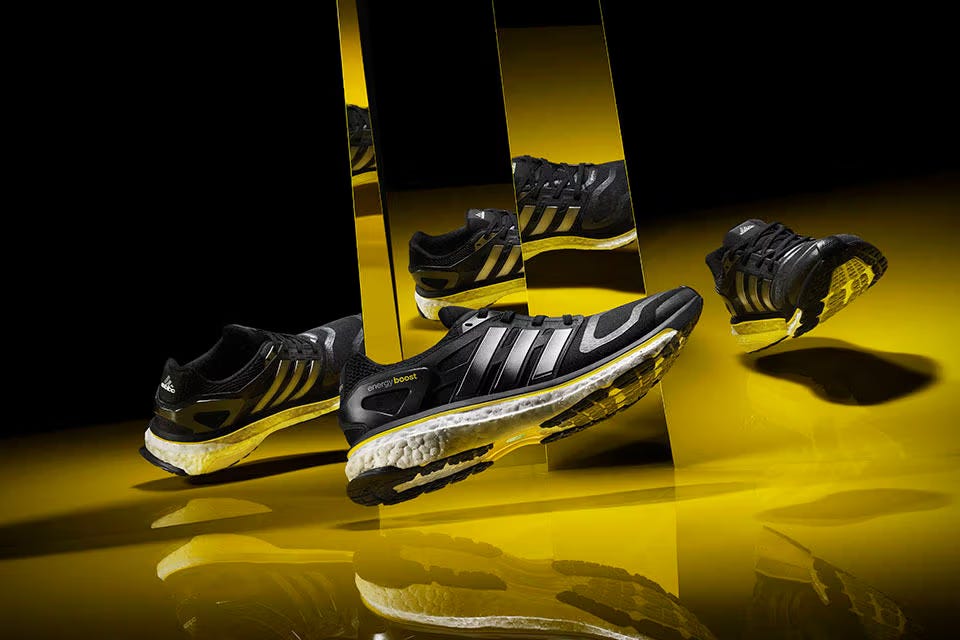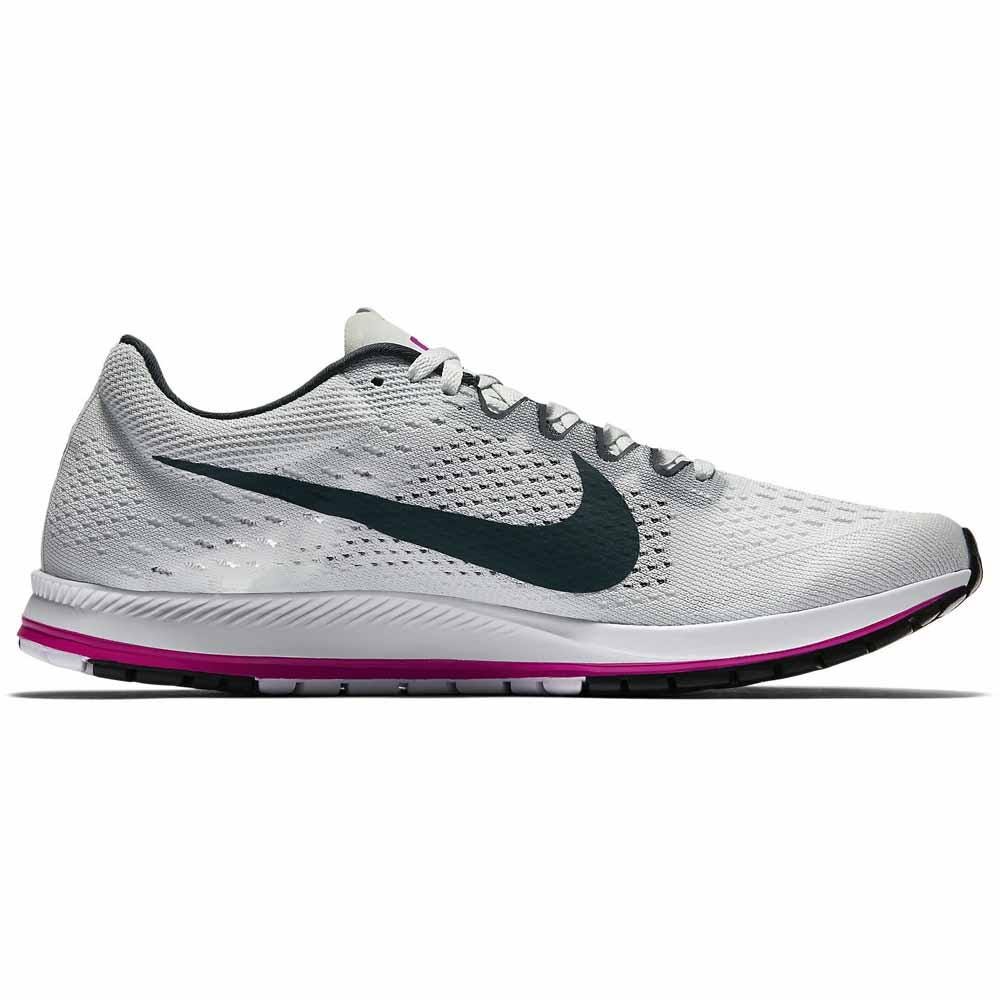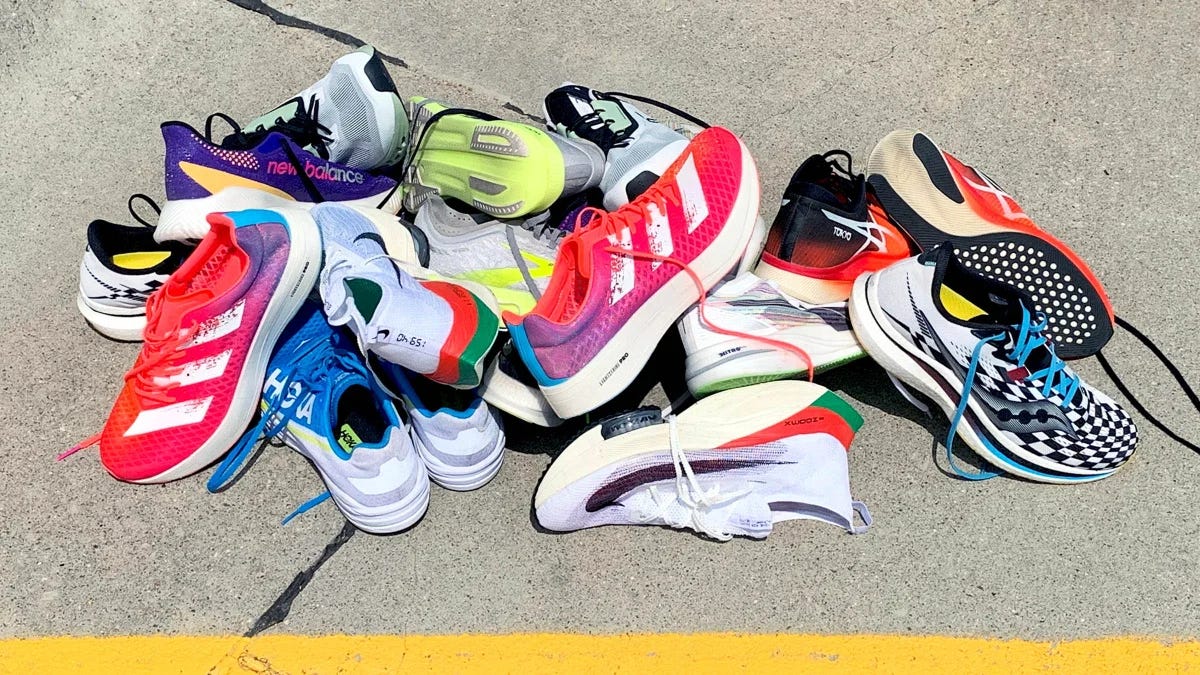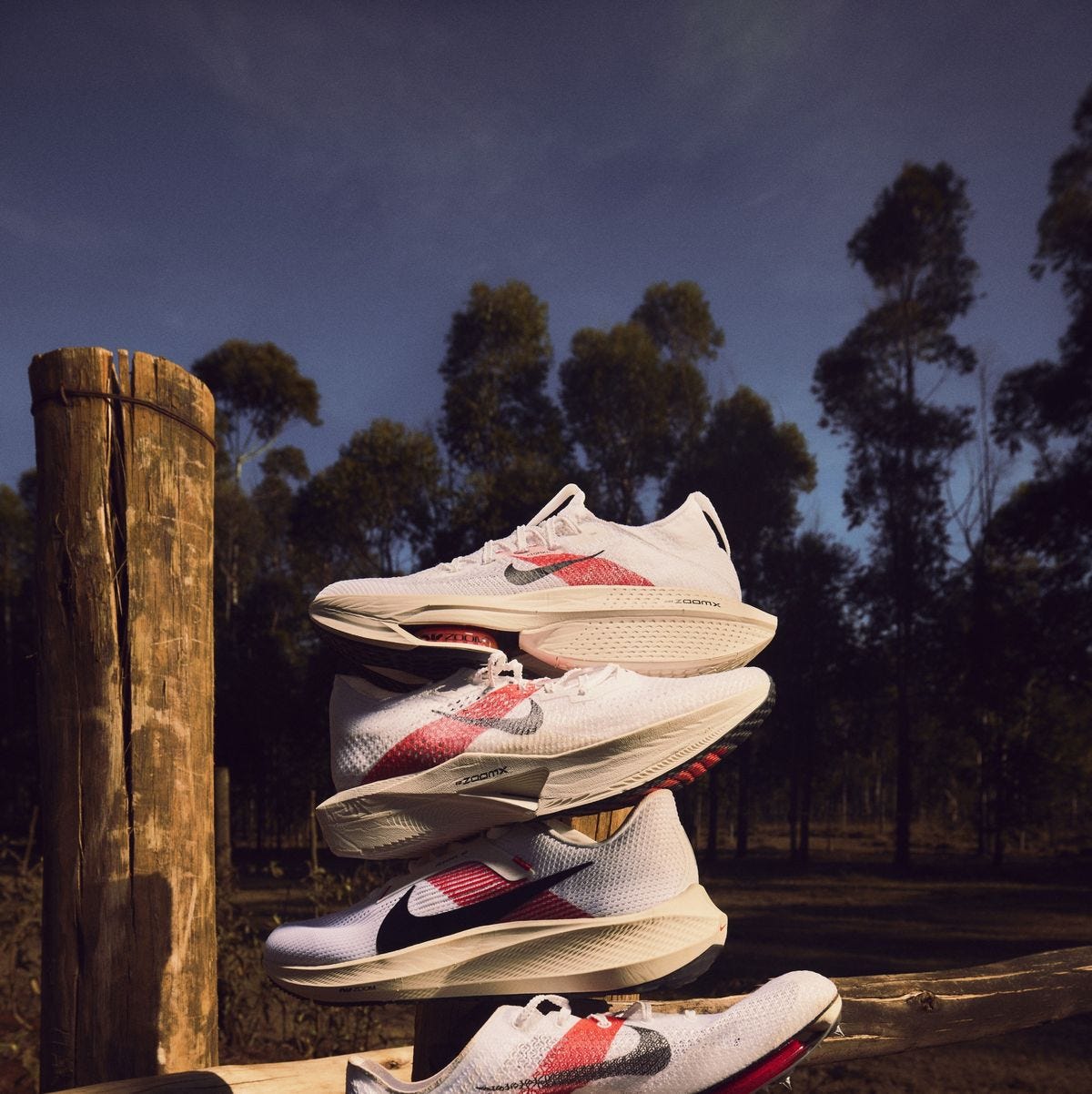Runners and The Aesthetic. (Part 3)
This week we're nerding out on some really cool shit -- Sneakers
Welcome to the third and final part of my miniseries on running, fashion, sneakers, and how it interconnects with one another. This week I’m doing an in-depth look into running sneakers and how far they have come. I could go all the way back to the beginning of its history, but I feel like that would be irrelevant, especially to how far we’ve come today, so I’ll be focusing on the more recent history, or older historical anecdotes and how they are relevant to today.
1970s:
Yes, I could discuss the origins of Nike and how they introduced the Waffle trainer, but that’s been done so many times that it’s honestly not important to what I’m trying to talk about today. What I am going to talk about is the beginning era of the running shoes we see today. Ethylene vinyl acetate, commonly referred to as EVA foam, was the first major technological advancement for sneakers. EVA foam was generally used in the midsole (I don’t know where else you would put it), and it was an air-infused foam that was designed to absorb shock and give runners a more comfortable shoe. Brooks was the first company to introduce this with their Villanova Model in 1975, and then added onto that advancement in 1976 by creating the Vantage, which is where they added a wedge between the footbed and the sole so that runners were leaning slightly forward. Today. this wedge is referred to as ‘drop’, which is the difference in the height of foam in the toe and the heel. I will be using running-specific terminology, and I’ll give brief definitions, but if you want a more in-depth explanation of some of the words I use, I suggest you look at the article by Self.
1980s - 1999:
Running has taken the world by storm over these two decades. With the introduction of comfortable running footwear, and EVA foam shoes becoming more accessible, more and more people were getting into running. Zappos claims that there was a 1,800% increase in marathon finishers by the beginning of the 80s (crazy).
There was a big focus on ‘stability’ for shoe manufacturers, which meant tonnes of support and lots of cushioning. Brooks continued to lead the charge with their Chariot, and Asics entered the chat with the beginning of the Kayano series in 1993.
Asics and Nike began the trend of adding extra materials to bring more comfort to shoes. With Nike, it was the Airmax (1987), and with the Asics, it was the Gel technology in 1993. Both shoes reshaped how we see comfort today and we are still seeing Asics double down on Gel comfort in the present day. It wasn’t all good, necessarily, because more materials = bigger shoe, and bigger shoes = heavier shoes.
In 1989, Brooks once again took the main stage with their Fusion model by being the first shoe company to add a carbon plate within the midsole! Sounds familiar, right? Well, at the time it didn’t really seem to take off, but I’ll talk more on that later on.
2000s:
Ahh Y2K. You sucked. Not only were your fits trash, but you also went backwards in your running technology. Researchers did suggest that running barefoot could be comfortable and better for your feet! I do see the validity in the research; however, it doesn’t necessarily make you faster. Anyways, through this research, running brands thought it would be best to follow this trend by reintroducing shoes with lower stacks (height of your foot from the ground) and drop. This is also when Nike introduced their Free running line, and Vibram also dropped their Fivefingers (gross, idk how they’re coming back in style)!
There were many pros and cons to this era of footwear. The first downside was that shoe technology was very ‘minimalist,’ meaning that not a whole lot of new innovation was done at this time — was mostly going back to the roots of running. Another con was that it wasn’t necessarily helping athletes become faster because it felt like shoe technology was going backwards.
However, the pro for minimalist shoes was that going back to a minimalist approach to running shoes allowed runners to activate all muscles within their gait (the way you run) to run faster, rather than technology in the shoes to propel them forward. activating all muscles in your gait is the key to injury prevention because you are making said muscles stronger; however, overuse of certain muscles also leads to injury, so it’s a tough balance to achieve.
2010s and beyond:
Breaking into the 2010s to now, there’s been a huge jump in running technology. There’s honestly so much information that I won’t be able to touch base with all of it.
I’ll start with some innovation that really started this whole fashion thing for me, which was the Adidas’ Boost technology (2013). Boost technology was a new cushioning system made by BASF, a chemical company based in Germany. Boost was designed to bring a much more comfortable run, with greater energy return (absorbing the shock from your step) to propel the runner faster.
I remember when I got my first pair of Ultra Boost. I couldn’t believe how comfortable they were. I never owned a pair of Air Max, and I had one pair of Gel-Lyte IVs (which were not designed for running) but wore them infrequently. These joints were crazy comfortable. It was also the summer I finished high school and I was working in a factory, so I was standing for like 10 hours a day — comfort was king during this time.
Nike also released the use of Flyknit (2012) with their sneakers, allowing a more breathable sneaker. Flyknit and/or similar knit styles are used on Nike runners to this day and while I do love the breathability that they offer, I feel as though they are not stretchy enough for my liking.
2016 is where it all blew up (remember this is only eight years ago). Nike, going back to the late 80s, decided to copy what was once discarded — carbon plates. That’s right. This is where it all started. Before the Rio 2016 Summer Olympic Games, Elite athletes were given ‘disguised’ super shoes (shoes with carbon plates in the midsole). These disguised shoes were made to look like Nike’s current marathon shoe, the Zoom Streak 6, but with the added technology in the sole.
The rest, as they say, is history. After the official launch of the Nike Vaporfly 4% (coined 4% because the shoe was supposed to give a 4% performance boost compared to its competitors), other running brands began to follow suit. It is understood that carbon-plated shoes provide a 4-6% increase in energy saving (that includes muscular fatigue).
What’s made the dawn of the supershoe so interesting is how much it’s changed the way we run! Because we’re running in shoes that propel us forward, our bodies require less energy to run faster and further. That being said, you need to have a solid mixture of running shoes in your rotation, not just supershoes, otherwise, some muscles in your gait will lose their strength, which will then encourage other muscles to become overworked to compensate… then before you know you got a big time injury, buddy.
Because every running company used carbon plates in their midsoles, companies had to find other ways to stand out from their competition — Foam construction. Foam construction did not come after the carbon-plate-emonium as each running label had its own recipe when it came to constructing the midsole.
“But Ted, why does foam matter in running shoes?”
Why, I’m glad you asked, mindless reader! Foam construction helps define what style of running you will get out of a shoe, what the shoe is designed for, and how long the shoe will last.
I’m still new to the science behind foam technology so if I make a mistake, I would love it if someone could correct me so I can edit it appropriately.
There are some key terms that I want to explain first before going into what they mean for us today;
Foam resilience: how quickly foam goes back to its original shape once compressed
Foam stiffness: how hard the foam feels underfoot — usually goes hand in hand with resilience
Foam geometry: sometimes different recipes are used throughout the sole of a shoe because they’re designed for different moments in your stride (e.g. the foam might be stiffer under one’s toes for a responsive push but soft in the heel to cushion the load when striking).
There are generally three types of running shoe foams;
EVA (which we mentioned earlier)
PEBA (mainly used in supershoes)
TPU (comfort)
This doesn’t mean that all running shoe companies use the same EVA/PEBA/TPU foam, but they have their own minute tweaks to have them stick out from one another.
EVA: The sole foam that has been used for decades — albeit updated here and there. EVA foam is generally used for shoes that we would consider daily trainers. When you go into your local running store and ask the 17-year-old store clerk for a pair of their finest EVA-soled runners, you might be met with some confused looks; however, if you were to drop names like New Balance’s Fresh Foam, or Saucony’s PWWRUN, or Asics FF Blast then people might understand what you’re saying. Yes all those shoe lines contain EVA foam.
What makes EVA so good is that they’re durable, so they’ll last forever; versatile, so you can use them in many different styles of running; and they’re still a fairly responsive shoe. The major downside to the use of EVA foam is that they’re not as comfortable as TPU foam, and not as responsive as PEBA foam.
Here’s a list of common EVA-soled shoes that I can recommend:
Hoka Clifton: BRO, I AM NOT GOING TO TALK ABOUT HOW MUCH I LOVE MINE. JUST READ MY NEWSLETTER ON THEM.
New Balance Fresh Foam x 1080: not the v13 tho they are way too soft and not responsive at all.
Brooks Glycerins: these were the first pair of runners I bought when I got into running, which I’ve also run the most KMs in — still have plenty of KM to go.
You can also get Supercritical EVA foam runners, this is a gas-infused EVA foam that provides an extra spring in your step. you would find these in race day shoes like:
New Balance Fuelcell Supercomp Trainer — Note that you cannot wear these on race day (if you’re trying to qualify for an important race) as the stack is too high for race regulations.
PEBA:
Polyether block amide is the foam that you would see in most supershoes. Currently, all the record-breaking shoes consist of this foam, even Adidas’ latest supershoe that has the lifespan of pretty much one marathon (which costs $500 USD). This foam really does give you the energy return you need to run your fastest, along with being lightweight and resistant to temperature changes (meaning it doesn’t soften in the heat).
The downside to this foam is that its durability does not last like EVA, as its resilience wears down a lot quicker than other foams.
Shoes with PEBA foam that I recommend:
Nike Alphafly: any model. A lot of people love the V1 and V3.
Saucony Endorphin Pro: Wifey broken so many PBs with this shoe
Saucony Endorphin Elite: These things are like from the future. Crazy crazy shoe
You can also get Supercritical PEBA foam. I honestly don’t fully understand the difference between the two, but if you were to acquire a shoe with Supercritical PEBA, you would most likely be copping a shoe Adidas Adizero Adios Pro.
TPU:
Last, but certainly not least, we have the thermoplastic polyurethane foam. TPU is the foam you would mostly see on most of your cruising runners. trainers you wouldn’t wear to do intervals or run a race in. Most likely used as a recovery shoe. It’s a comfort first shoe, so that does not mean you lose performance on them, and they are heavier than the other foams. That isn’t necessarily a bad thing because you’re not always going out to set a new PB for your 10km.
Shoes that contain TPU foam:
Adidas Ultraboost: TPU was the foam used within Boost technology to begin with.
Saucony Triumph: It’s funny because before I knew it was made with the same foam as Boost, I told my wife that the soles looked like Ultraboosts.
Final words:
I know this wasn’t a super jokey ha ha epic ‘sletter, but I hope I provided you with some surface-level depth to help you in your running journey. Maybe the real friends were the KMs we made along the way?
In all seriousness, it’s amazing how far the technology we use in a simple running shoe has become and I can’t wait for what the future has in store for us.


